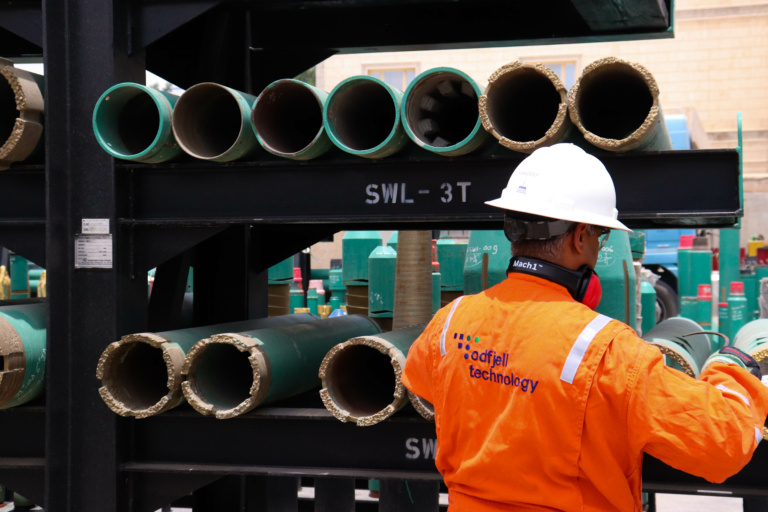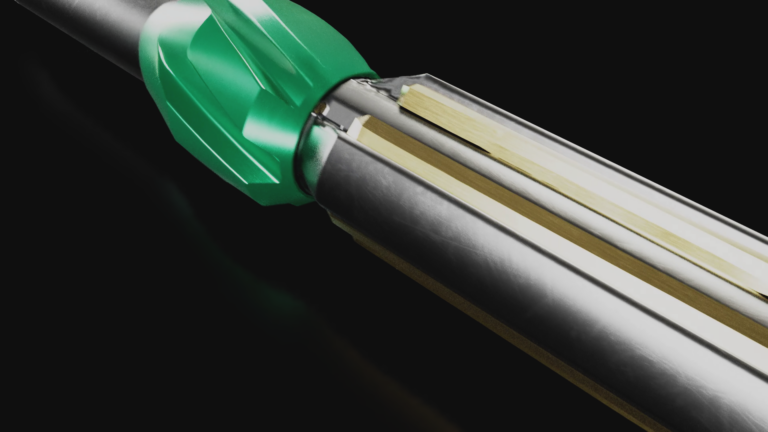The 3 Rs of Wellbore Clean-Up
At school, we learned the three Rs: reading, writing and arithmetic. There are also three Rs of wellbore clean-up, namely Rotation, Reciprocation and ciRculation. So sit up straight, pay attention and spit out that gum because today you are going back to school.
Before we start: In order to ensure an efficient wellbore clean-up operation, you cannot compromise on any of these three foundational principles.
1. Rotation
When we need to rotate the drill pipe, the rotating action helps create a turbulent flow by agitating the fluid in the well. Turbulent flow helps maximize the efficiency of chemicals and helps carry debris from the well.
Imagine you are washing some glasses in a sink filled with soapy water. First you just dip the glass in and pull it out. Probably not much happens. Next you dip the glass in and swish it around. This time you’ve probably done a much better job of cleaning the glass. This is the effect turbulent flow has with wellbore clean-up chemicals.
Another benefit of rotation is that is acts as in impeller to lift debris from the underside of the drill pipe into the main flow path in angled wells. It also draws the cleaning fluid from the main flow path to clean this hard to reach area.
As you can see, rotation of the pipe is one of the most important parts of the wellbore clean-up operation.
Wellbore cleaning tools should be able to rotate at high speeds without any practical limitations. The optimum speed for wellbore cleaning is 90-120 RPM. However, that is not always achievable, especially in the smaller sized tools, but like anything else that is a compromise that must be considered when we plan the wellbore cleanup operation.
At Odfjell Well Services, our objective is to always design tools that can be rotated at high speed, without fear of damaging the casing, wearing out the tools and accidentally twisting off the string. It is of the utmost importance that WBCU tools are designed with safety mechanisms or redundancies that prevent the tool from coming apart at high speed rotation. This allows us to rotate the pipe throughout the wellbore cleaning to ensure we get most from the cleaning chemicals.
2. Reciprocation
Reciprocation means moving the drill pipe up and down inside the wellbore. As you do so, the tool joints help drag the fluid up, and also create surges when we push the drill pipe back down.
This helps create turbulent flow and lift solids into the flow path and mechanically move debris from the well.
Scrapers and brushes work through reciprocation, so when displacing the well, we place the tools at critical depths in the wellbore such as packer setting depths, so that when we reciprocate the pipe, we are cleaning those areas thoroughly. Remember the sink with soapy water? Now think of a brush to help you clean that glass.
3. CiRculation
The rule of thumb with circulation is: The faster, the better. The faster you pump, the more debris you carry out due to the turbulent flow you create.
Circulation is the primary means of removing debris from any wellbore. The first thing we try to do is remove as much debris as possible with the mud – it is designed to carry debris from the wellbore, it is viscous, and it has all the correct fluid properties we need to remove debris from the well.
Chemicals also work better under turbulent flow. Turbulent flow is achieved at high flow rates. While it may be easy to achieve turbulent flow in a small diameter casing, as we move up the wellbore into ever larger casing diameters, it becomes harder and harder.
Therefore it is important that we design tools that allow us to achieve the flow rates required to clean the well efficiently.
During WBCU operations we place circulation devices at critical places, for example above liners, at the mud line (to clean the wellhead, BOP and riser), or at any other place in the wellbore where we transition from a smaller to a larger diameter.
These are always troublesome places in the wellbore, where debris collects during drilling, and they are also difficult to clean.
It is therefore important that we design tools fit for that purpose, that we can open and close on demand, and that can allow us to circulate, jet and wash critical areas clean during displacement or clean-up operations.
> Read also: The importance of magnets in a Wellbore Cleanup string
Do not compromise
These three R’s form the basis for everything we know about efficient wellbore cleanup. If you compromise one any one of these, you will unavoidably impact the efficiency of the clean-up.
Unfortunately, many tools on the market today compromise one or more of these founding principles. Tools that for example limit rotation or reciprocation during displacements or rotating tools with fixed external components that cause casing wear when rotating at high speed. My advice is to avoid these.
At Odfjell we always make sure that we do not compromise on any of these three foundations of WBCU when designing our tools. In the next few months we will be introducing new technology, which will allow much greater efficiency during liner clean-ups, that allow rotation, reciprocation and circulation without compromise when cleaning the liner. We believe this will be a step forward in well cleaning efficiency, but that is a topic for a future post.
Topics: Wellbore CleanUp

By: Simon Leiper
Simon Leiper has worked in the wellbore clean-up industry for 15 years. He leads the wellbore cleaning product line with Odfjell Well Services and is the inventor of multiple Odfjell patent applications. He has an HND in Mechanical Engineering and has worked and lived in international locations.



